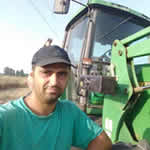The Cameroon sheep is a type of domestic sheep that comes from the country of Cameroon, West Africa. People also call it the Cameroon Dwarf or Cameroon Blackbelly.
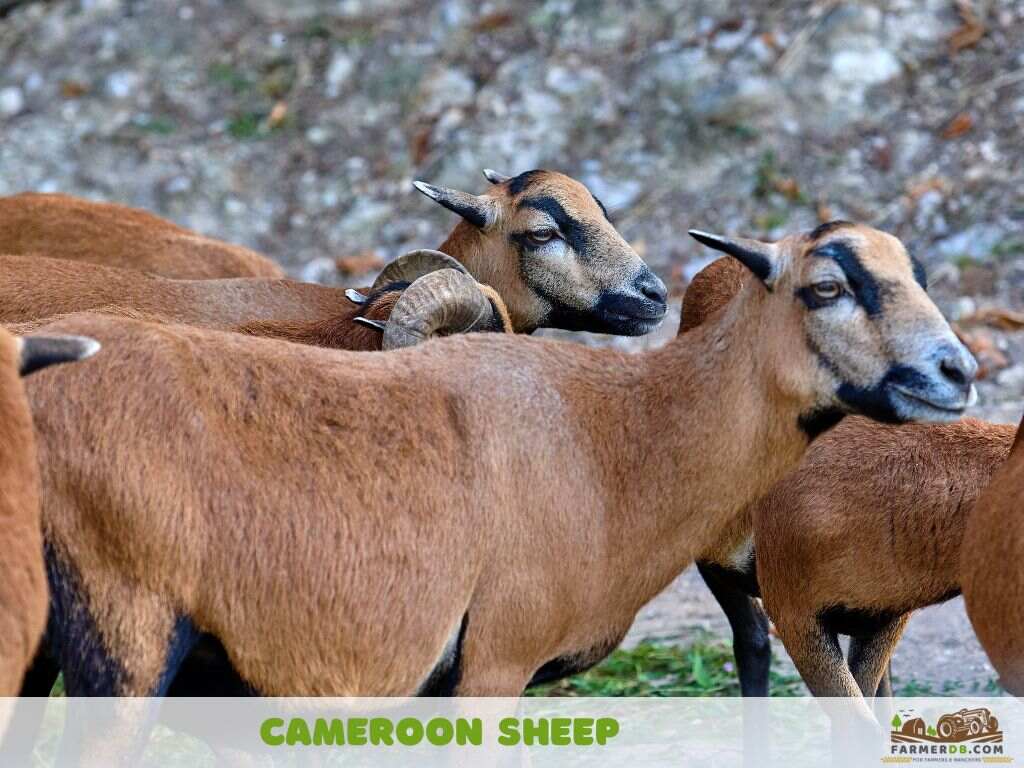
This breed is part of a larger group called West African Dwarf sheep, which are small sheep that are good at living in hot, humid areas and are known for resisting certain diseases.
Cameroon sheep come from a very old group of sheep that likely started in Guinea, in a region called Fouta Djallon. These sheep came to West Africa around 3000 to 2000 BCE. Over time, they got used to living in warm, forested places.
Even though Cameroon sheep started in Africa, they have now spread to other parts of the world, including Europe. There, people raise them for meat, to help manage pastures naturally, or just as pets.
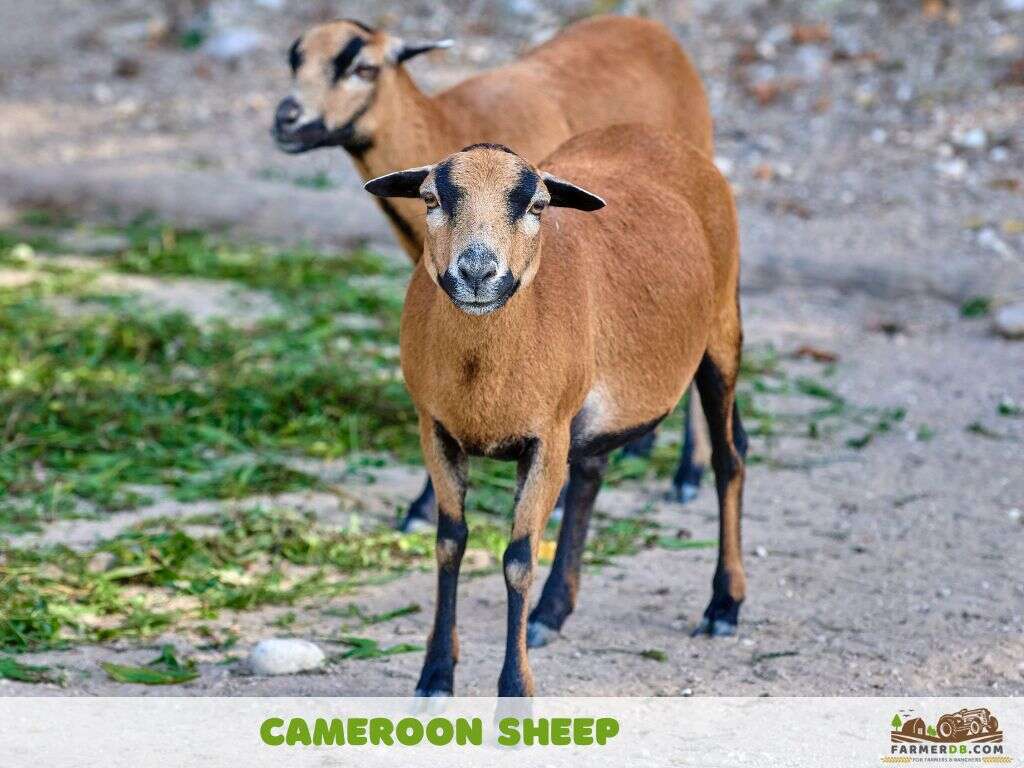
They are not in danger of disappearing right now, but they are still considered important. Scientists and farmers are working to protect their special qualities and to breed them in healthy, sustainable ways.
Contents
Characteristics
This sheep has a strong and compact body.
Color and Pattern
Most Cameroon sheep are brown with black markings. The black color is usually found on the belly, legs, and head, especially around the nose and eyes. This color pattern makes them look very unique. Some people call them “blackbelly” because of the dark belly.
Coat
These sheep don’t have wool like many other sheep. Instead, they have a short, smooth hair coat.
This coat sheds on its own once a year, usually in the spring, so they don’t need shearing.
In the winter, they grow a thin undercoat to keep warm. Their hair is easy to care for and works well in hot weather.
Head, Face, and Horns
The sheep has a narrow face with short ears that point to the sides. The eyes are alert, and the nose is usually black. Rams often have small horns, while ewes are polled.
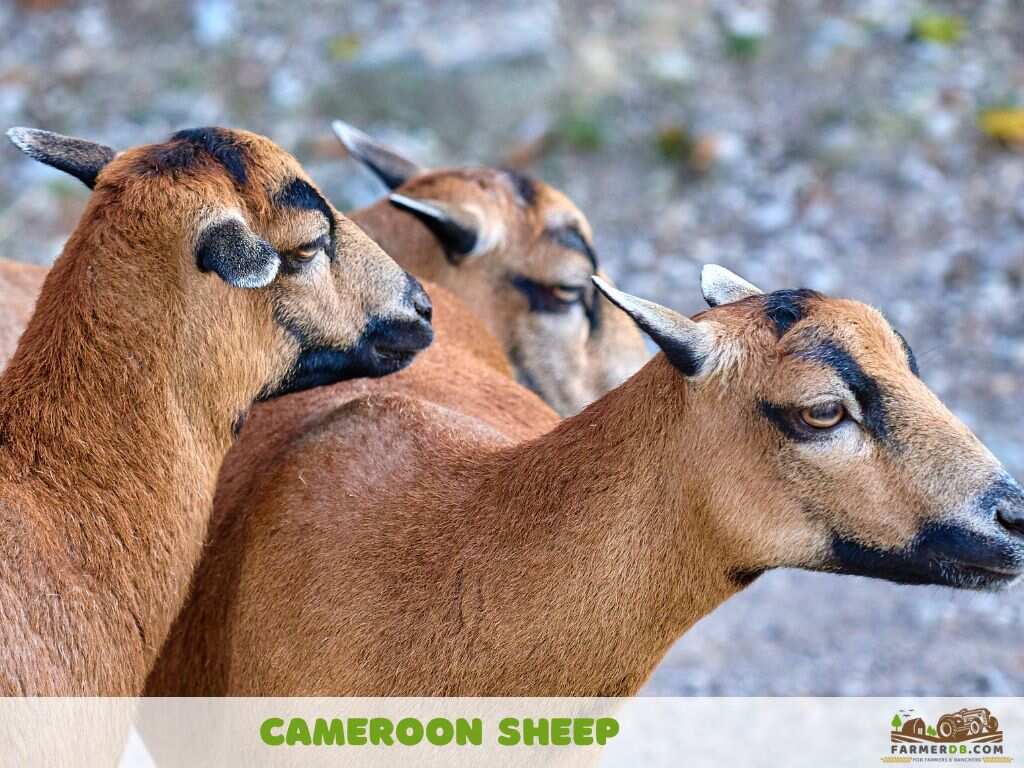
Back and Body
Their back is straight and strong, and their body is well-built but not too large. They have a deep chest and a round belly.
Size
It has a medium size.
Lifespan
The average lifespan of these animals is around 10 to 12 years when kept in good conditions.
Growth Rate, Weight, and Slaughter Time
These animals grow fairly quickly compared to other local sheep breeds. With good feeding and care, they can reach adult size by around 12 to 18 months.
Adult females weigh around 77 to 110 lbs (35 to 50 kg), while adult males are heavier, about 99 to 132 lbs (45 to 60 kg).
They are often ready for slaughter at 6 to 12 months old, depending on what you want: a smaller, tender animal or one with more meat.
By 6 months, they can reach 40 to 66 lbs (18 to 30 kg), which is a good size for meat in many local markets.
Temperament
These animals are friendly and gentle.
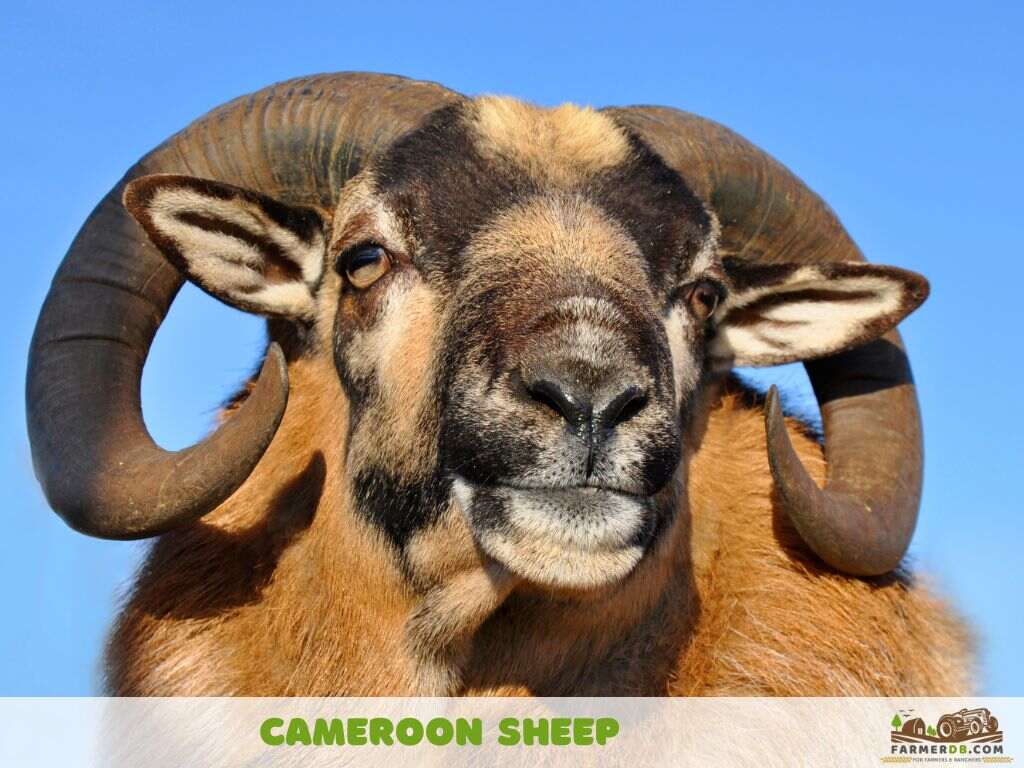
They don’t cause problems and are easy for farmers to care for. They like to stay close to other animals in the group. Most of the day, they walk around, eat, and rest.
They are more active in the morning and evening, and they rest more when it’s hot. At night, they sleep in a quiet, dry place. They quickly learn daily habits and follow the same routine each day.
Meat
They are mostly kept for meat, which many people in West Africa enjoy for its good taste and quality.
The meat is tasty, lean, and high in protein. It has less fat compared to some other sheep breeds, so it is a healthier choice for many people.
The flavor is mild but rich, and the meat is tender, especially in younger animals.
Because they grow well in natural environments, their meat is often considered more natural or organic in local markets.
Raising
Feeding
If you choose this breed, you should feed them mostly fresh grass, leaves, and hay, which are their main natural foods. You can also give them grains like corn or sorghum to help them grow faster, especially young ones and mothers with lambs.
Make sure they always have clean water and a salt lick or mineral block to stay healthy. In dry seasons, you can add dry forage or crop leftovers.
Environment
You can raise them in both natural, free-range systems and more controlled or semi-intensive systems. They adapt well to both.
In a nature-based (free-range) system, they are very comfortable. They enjoy moving around, grazing on grass and leaves, and staying in groups. This method is low-cost and fits well with how they live in their native areas.
But they also do well in semi-intensive systems, where they get some freedom to graze during the day and are kept in pens at night or during bad weather. In these systems, you can give them extra food like grains, which helps them grow faster.
Climate
“These animals are very well adapted to warm climates, but the ideal ones are their original environments, such as the tropical and subtropical regions of West Africa.
The tropical climate is the best climate for them, because it’s their natural home. They are used to high heat and humidity and can handle local diseases better than most sheep. You won’t have to do much extra. Just make sure they have clean water, some shade to rest in during the hottest parts of the day, and enough grass or leaves to graze on. Also, check them for parasites now and then, because these are common in warm places.
They can also live in temperate climate, but you’ll need to give them more care in winter. Their coat is not thick like wool, so they get cold easily. In cold months, they should stay in a warm, dry shelter with straw or other bedding. They’ll also need more food to keep their energy up. In summer and fall, they can enjoy being outside, grazing and walking freely.
As for cold or snowy climates, although not ideal for them, it is still possible to raise them with good care. You’ll need to protect them from cold winds, snow, and wet ground. A strong, closed shelter with dry bedding is a must. They can’t stay wet and cold for long, or they’ll get sick. Feed them more during winter because they use more energy to stay warm.
How many sheep per acre?
The number of sheep you can raise per acre depends on how good your pasture is.
On high-quality, well-managed pasture, you can keep about 6 to 10 sheep per acre.
On average pasture, it’s safer to keep 4 to 6 sheep per acre. If the land is poor or dry, you may only be able to raise 1 to 3 sheep per acre.
Always check that there’s enough grass and clean water, and rotate grazing areas to avoid overgrazing.
Breeding
You can start breeding them when the females are about 7 to 9 months old, as long as they are healthy and have a good body weight. Males are usually ready around 6 to 8 months, but stronger rams are better for breeding. They can breed any time of the year, but it’s easier if you plan it for when there’s enough food and good weather.
The gestation period is about 5 months (around 150 days). Most of the time, the female gives birth to 1 or 2 lambs, but it’s common to have twins, and sometimes even triplets. The births are usually easy and natural, but first-time mothers should be watched closely in case they need a little help.
Mothers are caring and protective. They clean and feed their babies right away. Lambs usually start eating grass after a few weeks but are weaned around 3 to 4 months old. At this point, they should already be eating solid food well and growing steadily.
Health Issues
This breed is usually strong and healthy, but it can still have some health problems.
In warm and wet places, worms and ticks are the biggest issues. If they stand in wet or muddy areas too long, they might get foot rot, which affects their hooves. In cold weather, without proper shelter, they can suffer from cold stress or pneumonia.
Young lambs are at risk of diarrhea if their living area isn’t clean or if they don’t get the right food.
To keep them healthy, it’s important to deworm regularly, keep their shelter clean, vaccinate them, and give them a balanced diet.
Advantages
- Good growth rate
- Resistant to diseases, especially parasites like trypanosomes.
- Low maintenance coat. It does not require shearing.
- They can have multiple lambs per year.
- Easy birth with little help needed.
- Calm temperament
- Can live in different systems.
- Great mothering skills
Disadvantages
- Not ideal for cold or wet climates
- Not suitable for wool production
- Needs good management in winter if raised outside its native climate
- They are not very common in the United States
Do you have any experience with the topic discussed here?
Would you like to improve the information shared and contribute your practical knowledge on the subject?
Your real-world experience as a farmer or rancher could greatly benefit other members, and the community would deeply appreciate your contribution.

